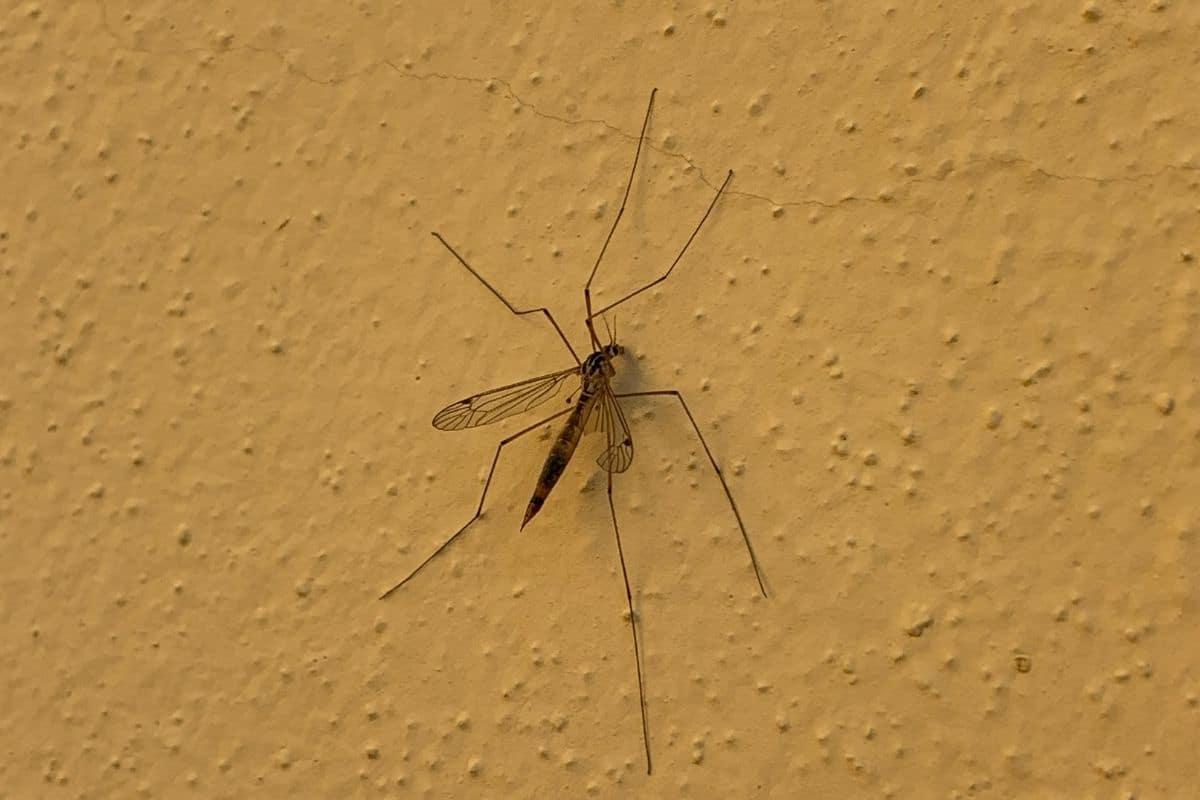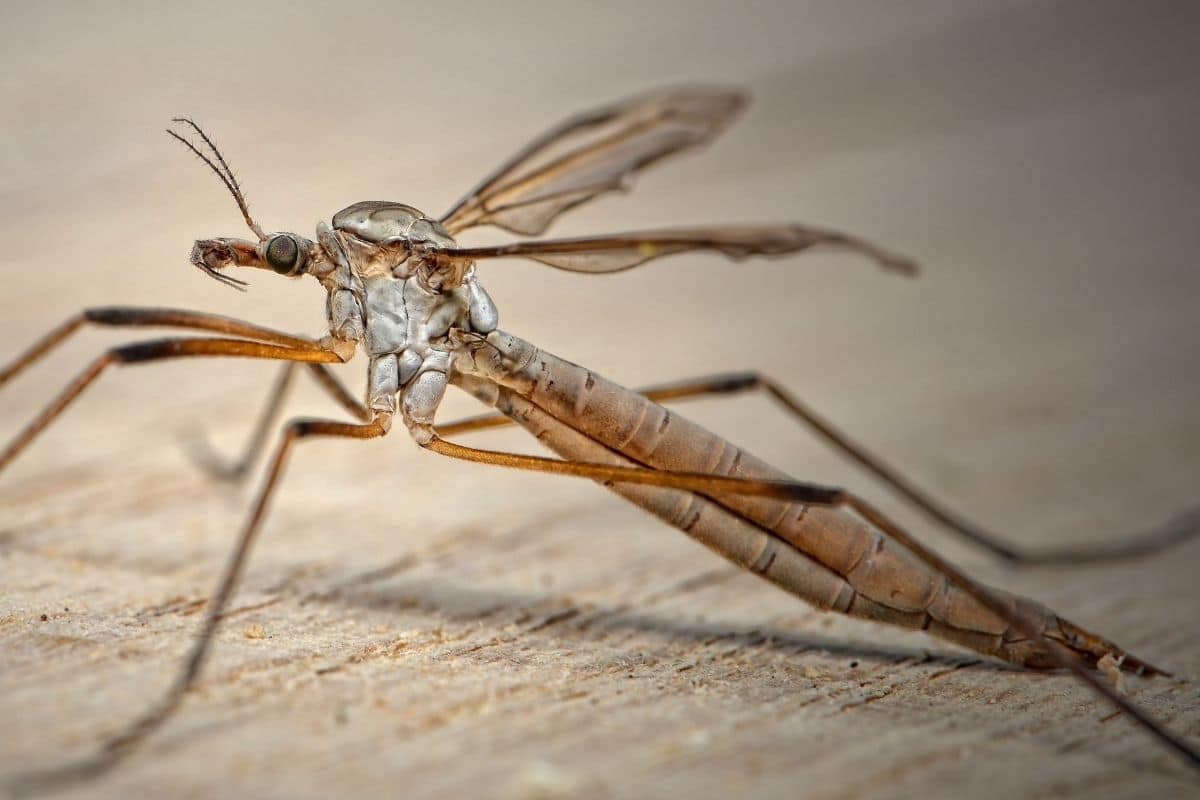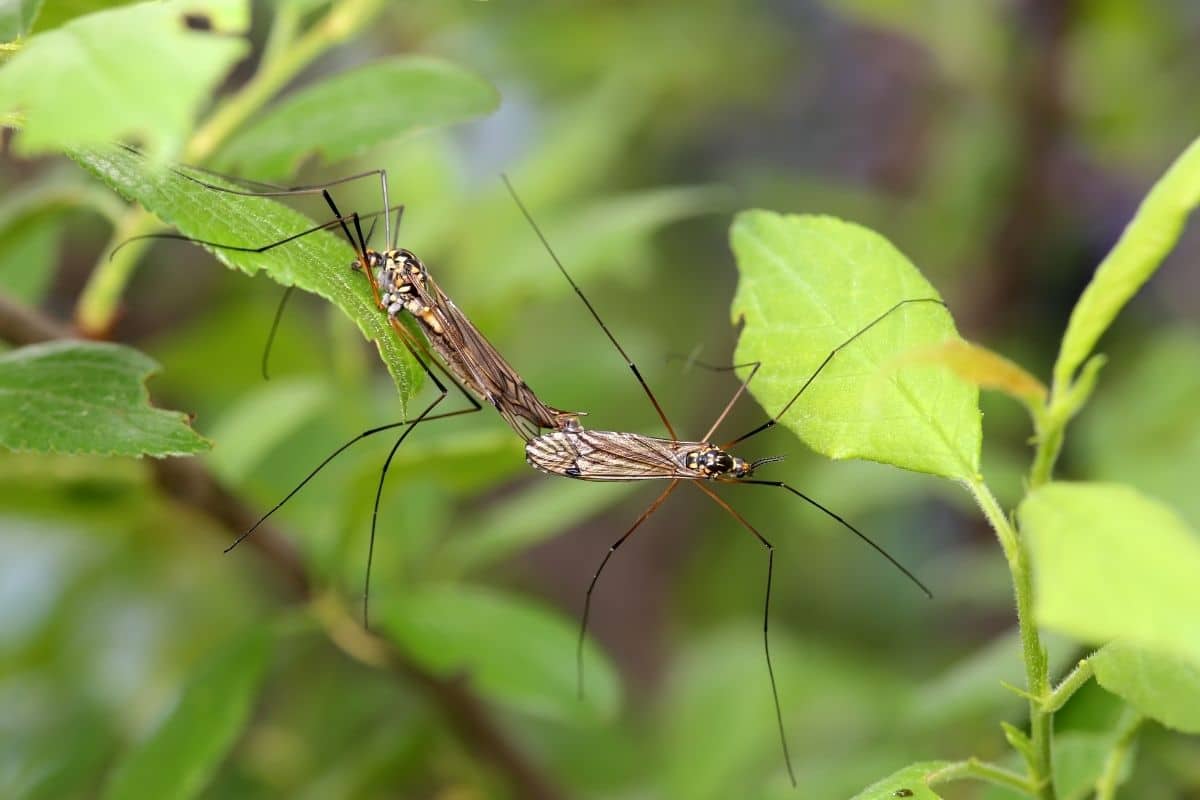Last updated on October 23rd, 2023 at 08:57 pm
The flying spider is found more often in the summer months and during twilight. However, this is not a spider species as colloquially expressed, but actually a species of mosquito.
Naming
The insects colloquially known as flying weavers are regularly found under the name of gnats. Their scientific name is Tipulidae. Despite their visual appearance, which resembles that of a spider, they belong to the order of mosquitoes. The spiders are classified as arthropods. Other well-known trivial names of the snake are tailor, snook, horse mosquito, long legged mosquito and cobbler.

Appearance
The main visual differences between flying insects and spiders result from their general shape and body structure. While spiders have eight legs, horseflies have only six very filigree and long extremities. In addition, the spider body always consists of two interconnected parts. The snake body, on the other hand, consists of a single unit of no more than four centimeters, on which the fragile wings are found.
The larvae of the snooks are characterized by:
about five centimeters in size
brownish coloration
six appendages at the end of the body
pupation after several months
hatching of the adult snake after about two weeks
flying spider (Tipulidae)
Damage
Tipulidae are completely harmless to all living creatures when fully grown, contrary to their assignment to mosquitoes. The animals have mouthparts, but they are not strong enough to penetrate the skin of humans or animals, for example. The insects are therefore only able to feed on exposed fluids such as water and nectar.
However, the gnat larvae cause chewed-off shoots and stems on almost all native plant species, especially in the summer months. Young seedlings in particular tolerate the aggressive predators only very poorly, so that in the worst case it comes to the death of these.

Tip: To correctly determine the cause of the damage that has occurred, it is advisable to closely examine the soil around the plant. Due to the larvae size of several centimeters, they can be easily identified.
Causes
The larval eggs are laid by the female snails by means of a laying borer at a depth of several centimeters. The preferred places to lay the eggs are:
- Planters
- Flower beds
- compost heaps
The larvae hatching from the up to 250 laid eggs require large amounts of plant material to grow into an insect. These are then processed by the digestive bacteria they contain. Preferably, the larvae feed on already dead materials. However, if these are not available in sufficient quantities, the larvae will move on to the still intact parts of the plant.
Control
Even though the flying spider is not dangerous in principle, it is a nuisance, especially in the summer months. Installing fly screens on windows and doors, as well as placing jars filled with essential oils such as lavender, lemon balm or sandalwood, will naturally drive them away. Compost piles represent a popular residence for winged insects. In particular, they like to consume the liquids produced by the decomposition processes. It is therefore advisable to keep the compost as far away as possible from the house or apartment and outdoor seating areas.

Other home remedies against the adult long legged mosquitoes are:
- catching by means of a glass
- attract them with UV light
- drive away by fumigant coils or aerosol vaporizers
- mating insects
The population of the far more dangerous larvae can be effectively contained with the help of mole crickets. Also known as nematodes, according to some studies they reduce the number of pests by up to 80%. In garden stores they can be purchased from 10 euros for an area of 10m ². In addition, it has been proven in practice to enrich the soil interspersed with larvae in the upper layers with calcium cyanamide and then to compress it. The compression of the soil mass significantly restricts the freedom of movement, so that the calcium cyanamide can achieve a higher effectiveness.
Note: The effectiveness of calcium cyanamide lasts up to two weeks, so that the soil should only be loosened again afterwards.
Frequently asked questions
How old does the flying spider live?
The winged insects die at the latest with the first frost, so their life span is usually only a few months.
Is the flying insect threatened with extinction?
At the present time, there is no excessive threat to the species, although the chances of survival have become more acute in recent years due to changing methods of plant cultivation.
How can Tipulidae be distinguished from dangerous mosquitoes?
While gnats with a body size of around four centimeters are easy to recognize visually, this is much more difficult for mosquitoes with a maximum length of 1.5 centimeters. In addition, mosquitoes produce the familiar sounds when flying around, which the snooks do not.
Can the insects also be put to good use?
Due to their preference for dead cellulosic materials, gnat larvae lend themselves to enhancing compost by accelerating decomposition processes.


